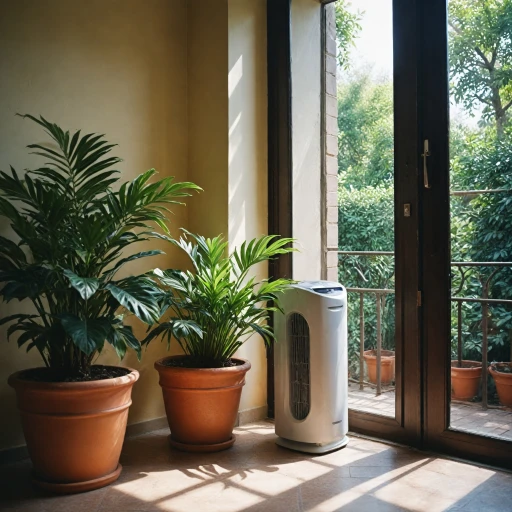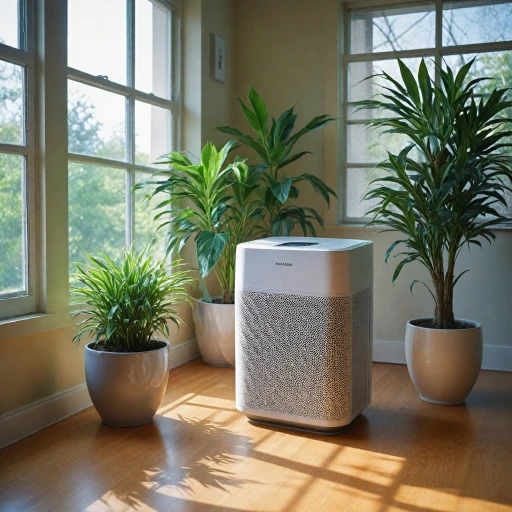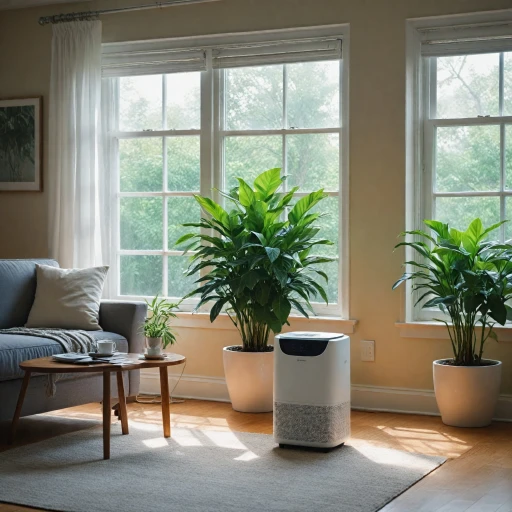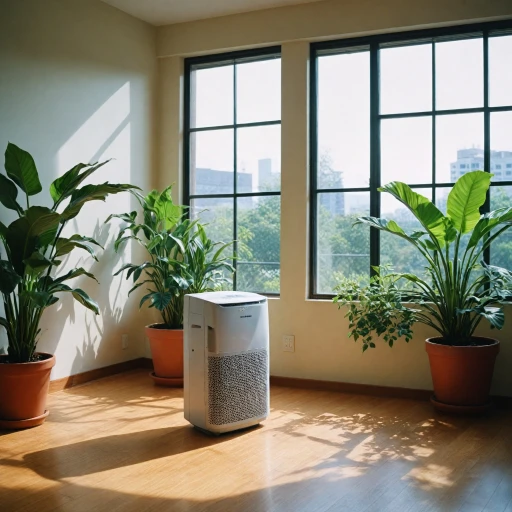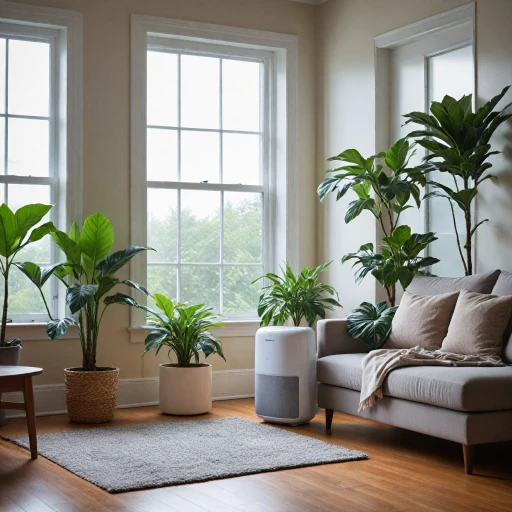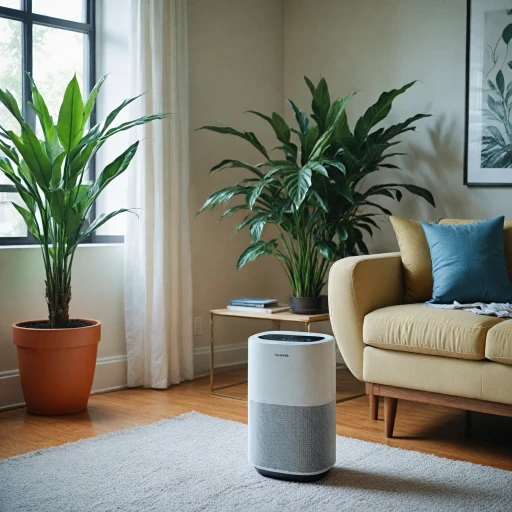
What is a Mist Eliminator?
Defining the Essence of Mist Eliminators
Mist eliminators serve as integral components in the realm of air purification, particularly in enhancing ambient air quality in various settings. At their core, these devices are designed to efficiently separate liquid droplets from a gas flow, thus ensuring cleaner air passage. Whether dealing with industrial emissions or simply filtering indoor air, the role of a mist eliminator cannot be overstated. In essence, mist eliminators function by utilizing advanced materials and mechanisms to capture both water and oil mist droplets. The aim is to prevent these tiny liquid particles from escaping into the atmosphere or within a workspace. They often employ a combination of wire mesh, mesh pads, or vane structures to improve separation efficiency. The choice of materials—like stainless steel or specific types of wire mesh—contributes significantly to the demister's effectiveness. Mist eliminators are not one-size-fits-all; they come in various forms and are tailored to specific applications depending on the necessary efficiency and airflow requirements. Whether using high-flow mesh pads or vane-type designs, each option is crafted to tackle unique challenges presented by different environments and pressures. The fusion of design and material used in the construction of these eliminators helps in minimizing pressure drops while maximizing contact surface area for superior gas-liquid separation. Understanding how these components function sets the stage for exploring their benefits and selecting the proper type to cater to your air purification needs. For a deeper insight into how other aspects such as benefits of a HEPA air conditioner can enhance air quality, further exploration is encouraged.How Mist Eliminators Work
Mechanics Behind Mist Eliminators
Mist eliminators play a crucial role in air purification by effectively separating liquid droplets from gas streams. These devices are designed to enhance air quality by capturing mist, which often contains contaminants like oil mist or water droplets. The process begins as air flows through the mist eliminator, where it encounters a series of obstacles designed to trap and remove liquid particles.
Key Components and Functionality
Most mist eliminators utilize wire mesh or vane type structures to achieve high separation efficiency. The wire mesh, often made from materials like stainless steel, provides a large surface area for droplets to coalesce and be removed from the air stream. In contrast, vane type mist eliminators use a series of angled plates to redirect the gas flow, causing droplets to collide with the surfaces and separate from the air.
Another effective design is the fiber bed mist eliminator, which uses densely packed fibers to capture even the smallest droplets. This type is particularly useful in applications requiring high efficiency and minimal pressure drop.
Optimizing Performance
To ensure optimal performance, it's essential to consider factors like pressure drop and flow rate. A well-designed mist eliminator will maintain a balance between high efficiency and low pressure drop, ensuring that the air purification process is both effective and energy-efficient. Regular maintenance, as discussed later, is also vital to keep these systems functioning at their best.
For more detailed insights into how mist eliminators integrate with other air purification technologies, you can explore the role of HEPA filter cassettes in air purifiers.
Benefits of Using Mist Eliminators
Advantages of Utilizing Mist Eliminators in Air Purifiers
Air purifiers equipped with mist eliminators offer several important benefits that enhance their functionality and efficiency. These specialized devices are integral for improving air quality, particularly in environments where gas flow and liquid separation are crucial.- Enhanced Separation Efficiency: One of the primary benefits of mist eliminators is their high efficiency in separating liquid droplets from the gas flow. This capability is pivotal in environments where airborne liquid particles, such as water or oil mist, are prevalent. The use of materials like wire mesh or stainless steel mesh pads helps to efficiently capture and remove these droplets, ensuring cleaner air.
- Reduced Pressure Drop: A well-designed mist eliminator minimizes pressure drop within the air purifier system. This feature ensures that the air purifier operates smoothly without requiring excessive energy to maintain airflow. Types like the vane type mist eliminator are particularly adept at balancing high flow and low-pressure drop scenarios.
- Versatility in Designs: Mist eliminators come in various designs, such as mesh, vane, and fiber bed forms. Each type is tailored to specific needs, allowing for customization based on the demand for separation efficiency or the nature of the liquid droplets being targeted. For instance, a demister pad might be more suitable for removing water droplets, while a vane type may be better for applications involving high gas flow.
- Durability and Maintenance: Constructed often out of materials such as stainless steel, mist eliminators are designed for longevity and durability. This robust construction helps them withstand harsh operating conditions. Maintenance is generally straightforward, requiring regular cleaning to retain high efficiency and effectiveness.
Types of Mist Eliminators
Diverse Systems Designed for Optimal Air Purification
When exploring mist eliminators, you'll encounter various types that cater to different needs, particularly focusing on the separation efficiency of gas and liquid droplets. Understanding these types can help ensure you select the most suitable mist eliminator for your air purification requirements.- Wire Mesh: This type employs a network of wires, often using materials like stainless steel, to create a surface area where droplets condense. The mesh catpure water droplets, oil mist, and other liquid droplets in the air. With its efficiency in trapping mist, a wire mesh is commonly used where maximum separation is needed. However, it can also result in a higher pressure drop compared to other options.
- Vane Type: In environments requiring high flow, vane type mist eliminators excel. These systems use curved plates or vanes to direct gas flow and promote separation of liquid droplets. The design not only enhances the efficiency but also minimizes pressure drop, making it ideal for applications involving high-speed air or gas flow.
- Fiber Bed: Known for their high-efficiency performance, fiber bed mist eliminators are adept at capturing very fine mist particles. These types consist of layered fibers, providing a large surface area to trap moisture while allowing gas to pass through. Although they may require more maintenance due to their complex design, their effectiveness is unparalleled where maximum mist elimination is critical.
- Mesh Pads or Demister Pads: These comprise densely packed mesh material, creating a physical barrier for liquid droplets. Featuring layers of knitted wire mesh, these pads increase separation efficiency without significantly affecting pressure. They're often used in conjunction with other types to enhance overall performance.
Choosing the Right Mist Eliminator for Your Needs
Factors to Consider When Selecting a Mist Eliminator
Choosing the right mist eliminator for your air purifier involves understanding several key factors. These considerations ensure that the device effectively removes liquid droplets from the air, enhancing the overall air quality in your environment.
Efficiency and Performance
One of the primary aspects to evaluate is the separation efficiency of the mist eliminator. High efficiency is crucial for capturing fine mist, oil mist, and water droplets. Consider the type of mist eliminator—whether it’s a mesh mist, vane type, or fiber bed—as each offers different levels of performance. Mesh pads and wire mesh designs, for example, are known for their ability to handle high flow rates and pressure drops effectively.
Material and Durability
The material of the mist eliminator impacts its longevity and effectiveness. Stainless steel options are popular due to their durability and resistance to corrosion, especially in environments with high moisture or chemical exposure. Ensure the material can withstand the specific conditions of your application.
Design and Compatibility
Consider the design of the mist eliminator in relation to your existing air purification system. Some designs, like demister pads and vane types, offer specific advantages depending on the air flow and pressure conditions. Ensure compatibility with your system to maximize efficiency.
Cost and Maintenance
While initial cost is a factor, also consider the long-term maintenance requirements. Some mist eliminators may require regular cleaning or replacement of parts, such as mesh or wire components. Evaluate the maintenance needs to ensure they align with your capacity for upkeep.
By carefully considering these factors, you can select a mist eliminator that not only meets your air purification needs but also offers reliable performance and durability over time.
Maintenance and Care for Mist Eliminators
Ensuring Longevity and Performance of Mist Eliminators
Maintaining your mist eliminator is crucial to ensure its long-term efficiency and to optimize the air purification process. Proper upkeep minimizes the risk of a pressure drop and preserves the separation efficiency of the system. Here are a few guidelines to help you care for your mist eliminator.
- Regular Inspection: Periodically check the mist eliminator for any physical damage, especially in high-pressure environments. Inspect for wear and tear, particularly in the wire mesh and vane type designs, which are susceptible to collecting debris.
- Cleaning: Accumulation of oil mist and liquid droplets on the mesh pads or fiber bed can reduce efficiency over time. Clean the surface area and demister pad regularly with water or a mild cleaning agent to prevent blockages and ensure a high flow of air and gas.
- Replacement of Parts: Some components, such as the stainless steel frame or mesh, may require replacement over time. Keep an eye on these parts to maintain the efficacy of the eliminators. Always use high-quality materials to ensure durability and effectiveness.
- Monitor Performance: Keep track of the system's efficiency and monitor any changes in pressure during operation. If you notice a consistent drop, it might be a sign that the mist eliminator or its components need attention.
- Professional Servicing: For more complex issues, consider hiring a professional to assess and service the equipment. They have the necessary tools and experience to handle intricate systems without causing further damage.
By following these simple yet effective maintenance steps, your mist eliminator will continue to deliver high efficiency in separating water droplets and other liquid components from the air. Regular care not only enhances performance but also extends the life of your air purification system, ensuring a cleaner and healthier environment.


